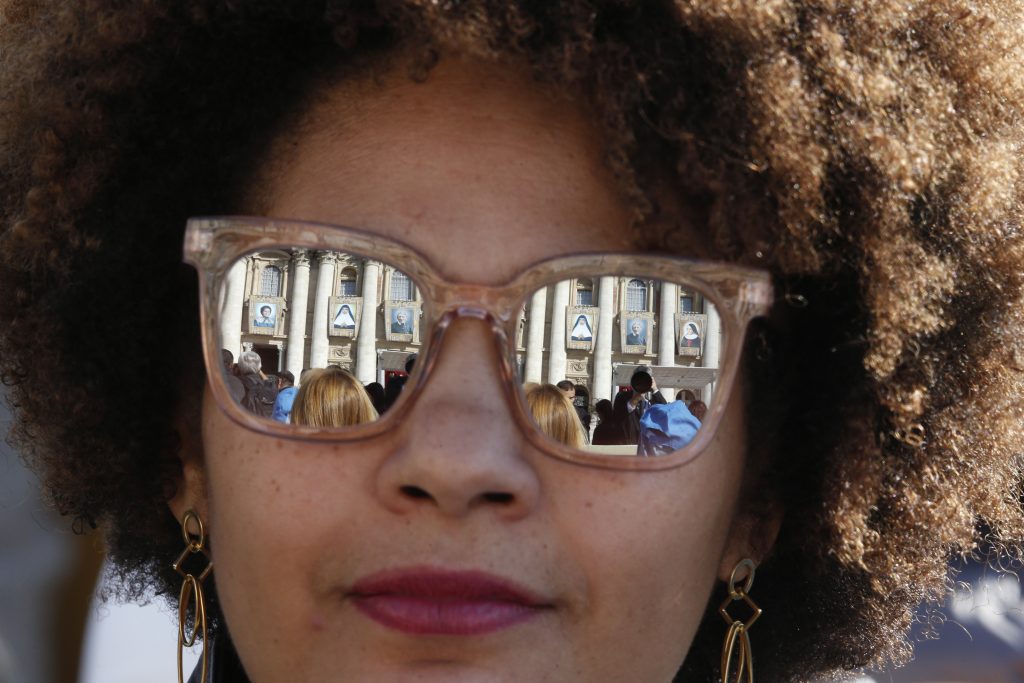ROME — Smack-dab in the middle of the Oct. 6-27 Synod of Bishops for the Pan-Amazon region, a summit of some 260 prelates and other Catholic leaders that’s elicited both praise and consternation, Pope Francis took a break to declare five new saints, including John Henry Newman, arguably the most supple Catholic thinker of the 19th century.
The Oct. 13 canonization ceremony provided a rare moment of unity amid a turbulent month, as leading Catholics from both the left and the right extolled Newman’s life and legacy.
Ironically, Newman was anything but a unifying force during his own lifetime.
Prior to his conversion, his “Oxford Movement” was controversial inside Anglicanism; after he swam the Tiber, his views on the development of doctrine, as well as his ambivalence about the dogma of papal infallibility, made him suspect among some of his fellow English Catholic prelates and in Rome during the long papacy of Pope Pius IX.
The fact that Newman tended to divide people in his era but brings them together today is a reminder of one of the central facts about canonization, which is worth recalling as the Church celebrates All Saints’ Day on Nov. 1: The sainthood process is, at bottom, an exercise in perspective.
Theologically, a canonization does nothing at all for the saints themselves, since the belief is that they’re already in heaven enjoying the beatific vision. As the Vatican never tires of repeating, a pope doesn’t “make” saints, God does, and the formal ritual doesn’t add or subtract anything to their holiness.
Canonization, in effect, is for the rest of us. It’s a way for the Church to lift these people up as an exemplar of holiness, and to offer them to us as role models and intercessors.
Typically, such recognition takes a while. Newman died in 1890, meaning it took almost 130 years for him to win a halo, and many cases unfold over a much longer arc of time. One thing such waiting periods provide, generally, is an opportunity to overcome the captivity of the here and now.
In the heat of the moment, it’s often secondary elements of a person’s life and activity that dominate our imagination. What did he or she say or do today that perhaps made someone else angry?
Whose side are they on in a debate or power struggle that seems endlessly important, even if the better angels of our nature grasp that the stakes really aren’t as high as they may seem?
In the 21st century, one is obliged to add: What did that person tweet out today that stirred the waters, or set off a digital frenzy?
With time, however, such footnotes to a life tend to fade away, and it’s the substance of who someone was and what they stood for that stands out in clearer relief. Such is the case for Newman.
For instance, long after the echoes of the controversies surrounding the First Vatican Council have faded, we can see that Newman’s theology was a permanent contribution, and his devotion to the Church was unwavering and not conditioned by the politics of a single debate.
In truth, precisely because sanctity is usually disruptive, saints are often divisive figures in their own time.
St. Francis and his mendicant movement, for instance, wasn’t greeted with universal acclaim; in our own time, St. Pio of Pietrelcina, better known as “Padre Pio,” one of the most acclaimed new saints of the late 20th century, was denounced in his lifetime as a charlatan and subjected to multiple ecclesiastical investigations.
Even Mother Teresa was the object of a poison-pen book by atheist author Christopher Hitchens.
Knowing that history, one might think Catholics would be less invested in contemporary polemics, since a defining aspect of their faith teaches them that today’s controversies will fade.
Alas, that often doesn’t seem to be our experience. Recently, Archbishop Diarmuid Martin of Dublin, Ireland, publicly lamented the “nastiness and bitterness” of Catholics on social media, and he’s hardly the first figure to make such an observation.
All that suggests that perhaps many Catholics haven’t fully absorbed the lessons of sainthood, making this year’s observation of All Saints’ Day an especially propitious moment for reflection.
In the meantime, it’s worth recalling that Newman wasn’t the only new saint named by Pope Francis in that Oct. 13 canonization ceremony. There were also four women in the group:
- Sister Dulce Lopes Pontes, known to Brazilian Catholics simply as “Sister Dulce” and known for her work with the poor, sick, and disabled.
- Marguerite Bays, a Swiss laywoman known as a spiritual powerhouse, particularly in her approach to physical suffering.
- Sister Mariam Thresia Chiramel Mankidiyan, a Syro-Malabar religious and foundress of the Sisters of the Holy Family.
- Sister Giuditta Vannini, co-founder the Daughters of St. Camillus, known for her work with the sick and elderly.
None was nearly as famous as Newman, but each now stands alongside him as recognized saints of the Church.
That, too, might suggest a lesson in perspective, confirming that celebrity and sanctity are hardly synonymous. Such a realization might inspire us, perhaps, to take a look around at unheralded figures in our own experience who, nevertheless, might be living lives of extraordinary spiritual depth.
If nothing else, such thoughts probably would be a better use of time than joining the online Twitter wars, an activity for which, it’s worth recalling, absolutely no one so far has been awarded a halo.

